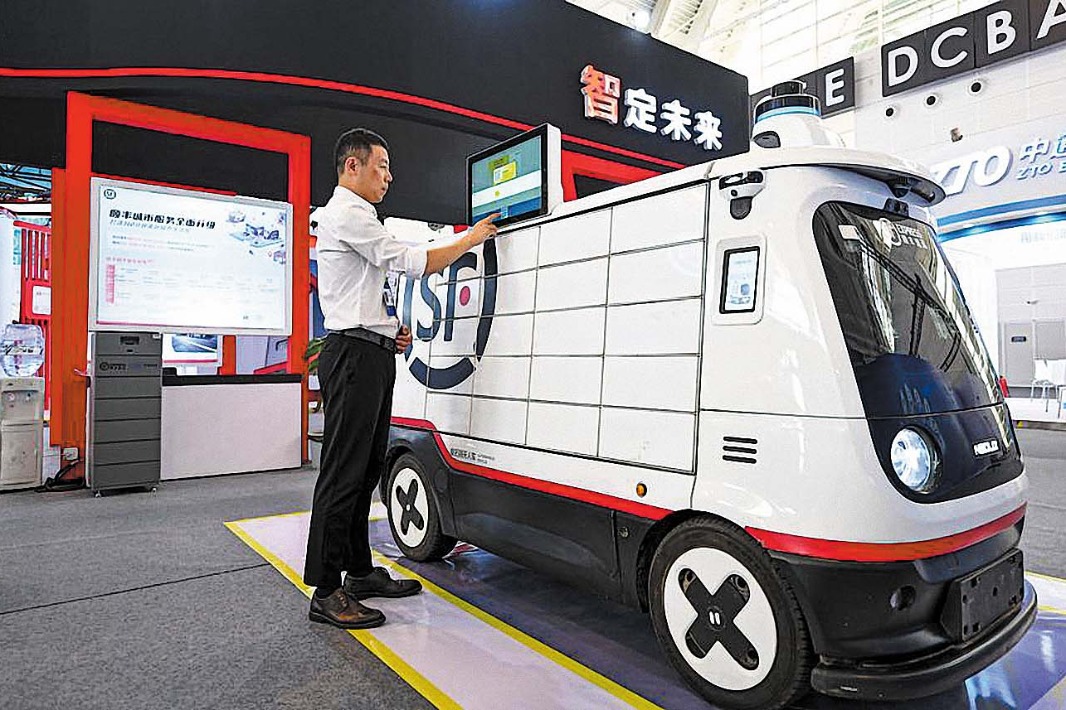Race on for 1st domestic satellite listed firm


In March, Galactic Energy, a private Beijing-based rocket firm, said the company has successfully run a system test on its "self-developed"50-ton-thrust reusable liquid oxygen-kerosene engine.
The company said that it is the country's largest liquid oxygen-kerosene engine and is also able to generate significant thrust.
Though the country's internet giants have not directly announced plans to develop, produce or launch satellites, they are showing a desire to do so. Tech conglomerate Alibaba Group launched a communications satellite to support its online shopping gala earlier.
Mi said that compared with the first development stage, which dates back to 2015 and before, China has since gained great momentum in product development and the initial commercialization of products.
"The biggest driver under such progress is the increasing policy support, from both top-tier cities like Beijing, Xi'an and western inland cities," he said.
In 2014, the Chinese authorities launched policies and called for the first time for private players to actively participate in the country's space industry. The National Development and Reform Commission, along with the Ministry of Finance and the State Administration of Science, Technology and Industry for National Defense, also unveiled a 10-year blueprint to promote the commercial aerospace sector in 2015.
In 2020, the NDRC first incorporated satellite internet technology into new infrastructure. New infrastructure is considered by the government a top priority for development and refers to infrastructure that is digital, smart and innovative.
Local provincial and prefecture-level governments are also gearing up efforts to attract more private companies to the commercial aerospace sector. Last month, Wuhan, Hubei province, vowed to create a 100 billion yuan space industry by 2025 to become the country's "satellite valley".
The city is offering preferential policies to support projects related to the manufacture of satellites, rockets and spacecraft, according to the city government's website.
Last year, Shenzhen, Guangdong province, also offered similar incentives to projects related to satellites and applications. In addition, a new commercial spaceport is being planned in the southern province of Hainan.
Though the country's commercial aerospace industry developed faster than expected, both company executives and industry experts noted that compared with other countries with established aerospace sectors, China still has big gaps in terms of core technologies and applications.
"The urgent problem for China's aerospace commercialization is to deal with bottleneck issues. That is, to lower the costs in related areas like launching satellites to low-Earth orbits," said Xia Dongkun, co-founder and vice-president of Galactic Energy.
Launching a satellite costs plenty, with a single satellite network costing at least 1.8 to 2 billion yuan. And a company cannot earn money by launching a single satellite, so the commercialization of satellites needs a network of dozens of satellites, industry experts said.
Xia said that in the US, Elon Musk's SpaceX introduced the Falcon 9, a reusable, two-stage rocket designed and manufactured by SpaceX for the reliable and safe transport of people and payloads into low-Earth orbit, as early as 2010 and made it reusable in 2015, which paved its way for lowering launch costs and realizing commercialization. But Chinese companies so far haven't achieved that, he said.
"Without new technological advances, it is difficult for China to achieve sustainable development of the commercial aerospace sector," said Wu Ji, a senior researcher at the National Space Science Center of the Chinese Academy of Sciences and a member of the 13th National Committee of the Chinese People's Political Consultative Conference.
Wu said that SpaceX had won a large number of orders from NASA thanks to its new and core technologies.
"It is the same for Chinese companies, and they are expected to create more technological innovations to fill in the gap. Also, if technical strength cannot be boosted in the short term, Chinese companies are likely to expand into new markets or new aerospace applications. To make it simple, they should provide model innovations for commercial benefits," he said.




































